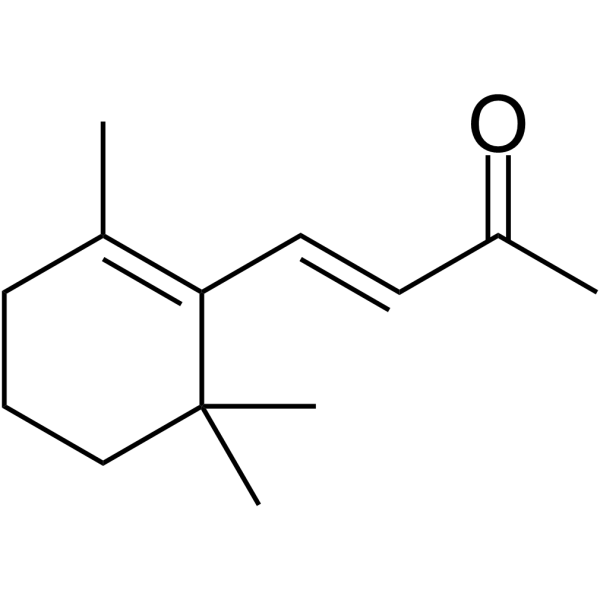β-Ionone |
| Catalog No.GC64619 |
β-Ionone은 위 선암 SGC7901 세포에서 세포 사멸 유도에 효과적입니다. 항암 활성.
Products are for research use only. Not for human use. We do not sell to patients.

Cas No.: 14901-07-6
Sample solution is provided at 25 µL, 10mM.
β-Ionone is effective in the induction of apoptosis in gastric adenocarcinoma SGC7901 cells. Anti-cancer activity[1].
β-Ionone is an analog of β-carotenoids which widely distributed in fruit and vegetables[1]. β-ionone (25, 50, 100 and 200 μM; for 24 and 48 h) inhibits SGC-7901 cell line growth. The measured IC50 value is 89 μM[1].
[1]. Mahsa Ansari, et al. β-Ionone and Its Analogs as Promising Anticancer Agents. Eur J Med Chem. 2016 Nov 10;123:141-154.
Average Rating: 5 (Based on Reviews and 30 reference(s) in Google Scholar.)
GLPBIO products are for RESEARCH USE ONLY. Please make sure your review or question is research based.
Required fields are marked with *




















